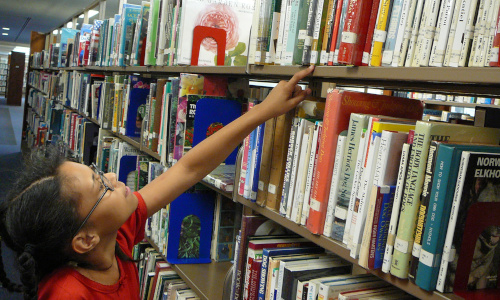All three panelists told publishers they have an accelerated need for more diverse authors and characters. Cox explains, “We are buying more and I’m in the deep conservative South. We are being very intentional about diversifying our collection. We don’t want just realistic fiction that’s a sad story about a kid coming out. We want different genres.”
In one-on-one discussions with publishers, librarians say they are committed to producing more diverse content, but in recent years, sales have not reflected the vocal desire for such content. And now books that have won awards for groundbreaking content are the topics of long threads on social media where educators are sharing ideas about how to keep such books on the shelf, like this post on the Future Ready Secondary Librarians Facebook Group:
“My high school teaches Stamped by Jason Reynolds as part of the sophomore curriculum. It is being challenged by a few parents and I was wondering if any of you had any resources for the justification for teaching it.”
The replies direct the librarian to many resources including professional book reviews on collection development sites like Titlewave and state curriculum guides, because if a book meets state curriculum standards, it’s more likely to survive a challenge. Then there’s the author’s literary accomplishments, as another librarian replied, “From a purely literary perspective… he’s such an accomplished author – one who many high school students would be familiar with from reading his books in elementary and middle school…. I personally think that is reason to explore his more mature titles as well.”
Meanwhile in another Future Ready Librarians Facebook Group, a best-selling Young Adult title is under scrutiny:
“Help! My admin is bringing up a book that was challenged in a neighboring district (The Hate U Give….) and wants to know what our policy is. Before I tell him we don’t have a current policy in place, could you help me out with some language to include? THANK YOU!”
Publisher Harper Collins offers resources on how to teach The Hate U Give as part of its SHAKE UP YOUR SHELVES campaign that encourages educators to retire offensive or books and add titles that reflect the experiences of more underrepresented groups. In the The Hate U Give Educator Guide, Harper Collins explains the book can be a springboard for conversations around important themes ranging from “racism” to “identity.”
Buried in the social media threads about this book and many others, one librarian shared her hope for the future: “My hope is that all of these challenges will encourage kids to go out and actually read the books that have the adults so upset.”
Companies that sell books to schools could view these trends as an emerging crisis for our business. Yet, when I read that last comment, I smiled. Because if students today are anything like me, reading all 850 books on that Texas list may be more of a welcome challenge than a deterrent.
- 10 reasons we love teachers - May 9, 2023
- 10 reasons we love school librarians - March 13, 2023
- Building culture and community takes more than a committee - February 9, 2023

